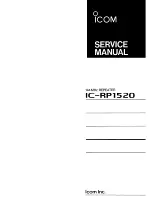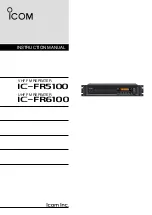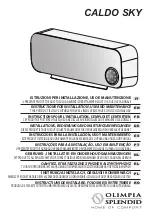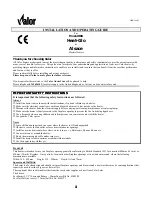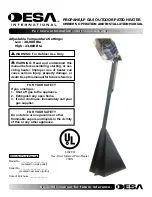
Form I-UDB, P/N 202658 R10, Page 19
Model
Sizes
Speed
Use these Two Motor
Wires
30 and 45
Low
Red and White
*Medium *Blue and White
High
Black and White
60, 75, 100,
and 125
Low
Red and White
Medium Blue and White
*High
*Black and White
4. Cut the crimped cap from the end of the wire that you intend to use and strip the
insulation.
5. Disconnect the factory-wired connection. Re-wire using the newly stripped wire.
6. Put a wire connector on the end of the blower motor wire that was disconnected.
7. Replace the heater access panel and turn on the gas and the electric.
Sizes 150-400 with Belt Drive
The belt drive on these units is equipped with an adjustable pulley that permits adjust-
ment of the blower speed. Follow these instructions to adjust the blower speed.
1. Turn off the gas and the electric power.
2. Loosen belt tension and remove the belt.
3. Loosen the setscrew on the side of the pulley away from the motor.
4.
To increase the blower speed, decreasing outlet temperature
, turn the
adjustable half of the pulley inward.
To decrease the blower speed, increasing
the outlet temperature
, turn the adjustable half of the pulley outward. One turn of
the pulley will change the speed 8-10%.
5. Tighten the setscrew on the flat portion of the pulley shaft.
6. Replace the belt and adjust the belt tension. Adjust tension by turning the adjusting
screw on the motor base until the belt can be depressed 1/2-3/4” (13-19mm). If the
belt needs adjustment, the recommended method of adjusting the belt length is to
count the number of links and remove one link for every 24. (A link is made up of
two joining sections of belt. For easier removal of links, turn the belt inside out. But
be sure to turn it back before installing.) Re-tighten the lock nut on the adjusting
screw.
7. Turn on the gas and electric. Light the heater following the instructions on the
lighting instruction plate.
8. Check the motor amps with an amp meter. The maximum motor amp rating on the
motor nameplate must not be exceeded.
CAUTION: An external duct system static pressure not within
the limits shown on the rating plate or improper adjustment
of the motor pulley or belt may overload the motor.
If the duct resistance is low, the blower may deliver too high an air volume; or if the
heater is operated without ductwork, the blower may deliver excess air to overload the
motor, causing the overload protector to cycle the motor. Reducing the blower speed
will correct these conditions. If ductwork is added to an installation, it may be neces-
sary to increase the blower speed. Decreasing blower speed will increase outlet tem-
perature; increasing blower speed will decrease outlet temperature.
Sizes 30-125 with Direct Drive
Direct drive blower motors have multi-speed taps for speed adjustment. If your instal-
lation requires an adjustment of the blower speed, the motor may be re-wired to an
alternate tap by following these instructions.
1. Turn off the gas and the electric power.
2. Remove the access panel to reveal the wiring connections.
3. Consult the wiring diagram on the heater and follow the chart below to choose the
wire for the desired adjustment. The asterisk(*) indicates the factory-wired speed.
































